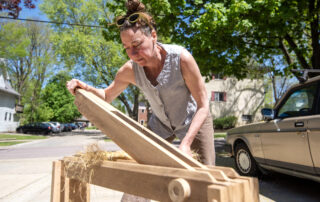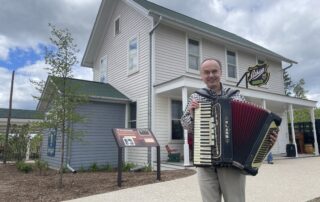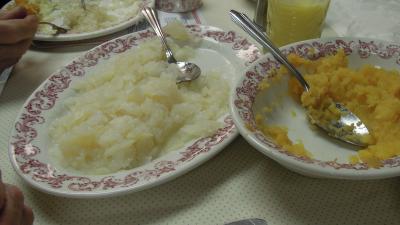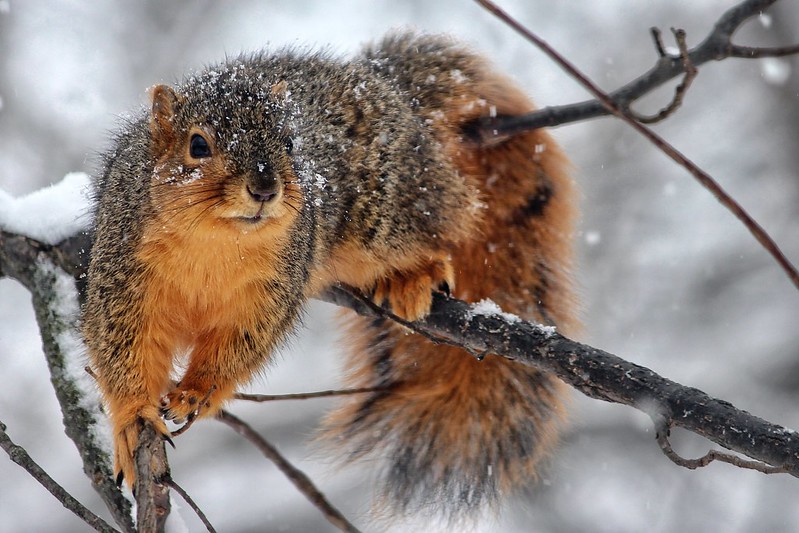Most every Midwestern farmstead or field has its share of weathered wood: fence posts, barn beams, scraps left over from past projects. Beyond the rough surfaces of these scraps, Dan Sullivan of Wausau sees potential.
“You’ve got a two-century old piece of wood that, when the barn comes down, people look at and say it either goes into a landfill or it goes into a campfire,” Sullivan said. “For me, that’s a shame.”
For the past few years, Sullivan has been saving old wood from such fates and turning them into hand-hewn treasures. It began when Sullivan, a retired government worker, began trifling with a set of old boards in his garage.
“I had a bunch of pieces of old wood that I was going to use for landscape timbers, and I just didn’t want to throw them away. I felt they had some purpose to them,” Sullivan said. “I started kind of playing around with them, started doing a little bit of carving on them, just thought ‘let me see if I can do some kind of decoy.”
The project was a success, and Sullivan has since carved flocks of duck decoys. He calls them “Boonducks.”
“The name ‘Boonducks’ evolved from the fact that they’re made from wood that’s recovered from out of the boondocks,” Sullivan said.
Sullivan builds the decoys in his basement workshop.
“I use a saw to get the rough form, and then I start chiseling around the sides and the shoulders,” Sullivan said. “From that point, I use what are called shaping rasps to get all the different contours.”
Instead of creating a perfectly-smooth surface, Sullivan tries to preserve the rough character of the wood, even adding his own chips with a small hammer. While he uses a wide variety of tools, Sullivan does not use electric tools. He can’t.
“If I start using power tools, I won’t have fingers,” he said. “I have had macular degeneration for almost 50 years now. It’s normally an eye condition that hits people in their 70s and 80s. For me, I got it at age nine, and it slowly diminished my central vision.”
That condition means Sullivan cannot drive a car or read a newspaper, but it also means he sees everything (including ducks) differently.
“As I explain to people … the average person sees the feathers; I see the flutter,” Sullivan said. “I see the ducks in kind of a folk art version because I can’t do details. I emphasize those different caricatures of a duck.”
Sullivan’s unique vision has also inspired another creative pursuit: writing. He’s already published three books under the pen name D.S. Sully. Much of that writing is inspired by his childhood in Dodgeville as well as his experiences with adversity.
Sullivan said he has also been encouraged by VSA Wisconsin, an organization that helps artists who have disabilities. With their help, he has sold his ducks at art shows around the Midwest and elsewhere.
“They’ve been in shows last year in California, Minneapolis, Louisville … one even ended up in the Nixon library in California,” Sullivan said. “Just in the past week, I had a call from a gentleman in Hawaii who wants to commission me to do them for a new house he’s building.”
Ultimately, Sullivan said, making the ducks and finding them new homes allows him to help others see one part of the world the same way he does.
“That’s what art is all about,” Sullivan said. “Each of us can look at something but see it a little differently, and with art, you turn that into a tangible form.”







